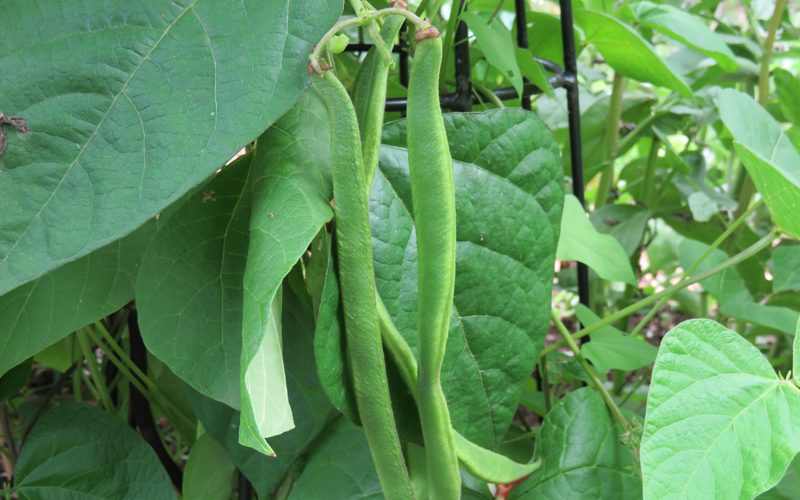There has been a bit of a trend developing in recent years…in a bid to grow more in small spaces, the rise of vertical gardening has taken place. We love it! What a great way of maximising your back yard, especially if you live in a city or town and garden space is both limited and precious.
What surprises a lot of people is that you can grow quite a wide variety of fruit and vegetables vertically by training the plants up trellises and other supports. Vertical growing is not just for runner beans. From our selection of plants alone you could grow melons, cucamelons, cucumbers, runner beans, borlotti beans, French green beans, peas, mange tout, sugar snaps, asparagus peas and all sorts of squash varieties.
Let’s say you have a south-facing wall running down one side of your garden that gets plenty of sunshine during the day. With a few grow bags, pots or large window boxes and a trellis attached to the wall you could grow quite a lot. And it would only intrude a couple of feet into your garden. The beauty of all the vegetables that can be grown vertically is that you harvest loads from just one plant. For example, a single plant could grow 8-10 generous sized butternut squashes, one cucumber plant will easily give you a few salads worth throughout the season and beans really are the veg that just keep on giving. They all look very attractive too, but that’s by the by.
To those of you that don’t have much space, we challenge you to grow some veggies vertically this year. Even if you just have a small balcony. Give it a go!
For inspiration, have a look at our Pinterest board…and for a little advice on how to grow those vertical veg, keep reading.
How to grow vertically:
You’ll need a trellis that is about 6 foot tall, and some pots, grow bags or even a narrow bed dug into the ground. Get your plants into position and as they grow you can loosely tie the main stems and branches in to the trellis. For the plants that naturally climb, i.e. beans, peas, cucumber, squash and melons, you can encourage any tendrils (think of them as tentacles) to wind themselves naturally around the support by strategically placing them behind the trellis bars from time to time.
For the plants that have fairly small fruits, you won’t need to do much more than this other than keeping them well watered, fed and weed-free. You may need to give the larger fruits, like melons and butternuts, a little extra support. Hmm, how to support melons? Ladies, any ideas? Yep, you’ll need to make some sort of hammock. You could use a pair of old tights, some netting (the sort you might find at the greengrocers for a veg bag) or anything else that springs to mind. Tie each end to the trellis, balance the melon or squash inside and Bob’s your uncle.

